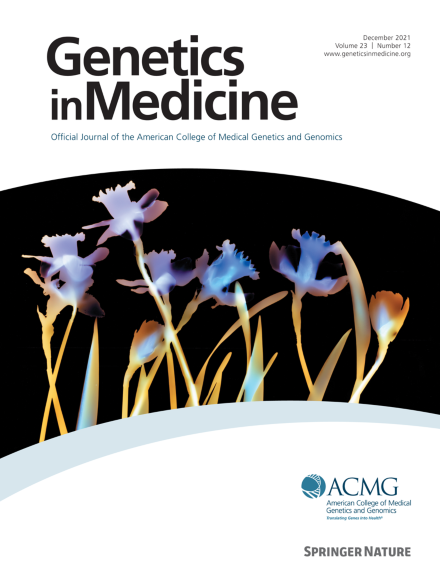Smith-Lemli-Opitz syndrome: Clinical, biochemical, and genetic insights with emerging treatment opportunities
IF 6.2
1区 医学
Q1 GENETICS & HEREDITY
引用次数: 0
Abstract
Smith-Lemli-Opitz syndrome (SLOS), also known as RSH syndrome, is an inborn error of cholesterol biosynthesis first described in 1964. Since then, significant advances have been made in understanding its pathophysiology, both during fetal development and postnatally. Cholesterol is a crucial lipid in the body, especially in the central nervous system, which accounts for nearly 25% of the body’s total cholesterol. Cholesterol deficiency in SLOS can lead to congenital malformations and severe neurodevelopmental disabilities. The biochemical and genetic bases of SLOS have been elucidated. Reduced or absent 7-dehydrocholesterol reductase enzymatic activity results not only in cholesterol deficiency but also in accumulation of 7-dehydrocholesterol, 8-dehydrocholesterol, and toxic oxysterol metabolites, which contribute to the pathophysiology of SLOS and correlate variably with the severity of its clinical symptoms. Despite decades of research, the clinical recognition of SLOS remains challenging because of the condition’s multisystemic nature and noteworthy phenotypic variability. This review provides an up-to-date summary of major research advances in the study of SLOS with a focus on clinical manifestations and biochemical and genetic findings, which, taken together, facilitate recognition and diagnostic confirmation. Additionally, we recap past and current efforts in therapeutic development and offer guidance for disease management.
史密斯-莱姆利-奥皮茨综合征:临床,生化和遗传学的见解与新兴的治疗机会。
Smith-Lemli-Opitz综合征(SLOS),也称为RSH综合征,是一种先天性胆固醇生物合成错误,于1964年首次被描述。从那时起,在了解其病理生理方面取得了重大进展,无论是在胎儿发育期间还是出生后。胆固醇是人体中至关重要的脂质,尤其是在中枢神经系统中,它占人体总胆固醇的近25%。胆固醇缺乏会导致先天性畸形和严重的神经发育障碍。sls的生化和遗传基础已被阐明。7-脱氢胆固醇还原酶(DHCR7)酶活性的降低或缺失不仅导致胆固醇缺乏,还会导致7-脱氢胆固醇、8-脱氢胆固醇和有毒氧甾醇代谢物的积累,这有助于SLOS的病理生理,并与其临床症状的严重程度有不同的相关性。尽管经过数十年的研究,由于该病的多系统性质和显著的表型变异性,临床对SLOS的认识仍然具有挑战性。这篇综述提供了最新的主要研究进展的总结,重点是临床表现和生化和遗传学研究结果,这些结果结合在一起有助于识别和诊断。此外,我们回顾了过去和目前在治疗发展方面的努力,并为疾病管理提供指导。
本文章由计算机程序翻译,如有差异,请以英文原文为准。
求助全文
约1分钟内获得全文
求助全文
来源期刊

Genetics in Medicine
医学-遗传学
CiteScore
15.20
自引率
6.80%
发文量
857
审稿时长
1.3 weeks
期刊介绍:
Genetics in Medicine (GIM) is the official journal of the American College of Medical Genetics and Genomics. The journal''s mission is to enhance the knowledge, understanding, and practice of medical genetics and genomics through publications in clinical and laboratory genetics and genomics, including ethical, legal, and social issues as well as public health.
GIM encourages research that combats racism, includes diverse populations and is written by authors from diverse and underrepresented backgrounds.
 求助内容:
求助内容: 应助结果提醒方式:
应助结果提醒方式:


